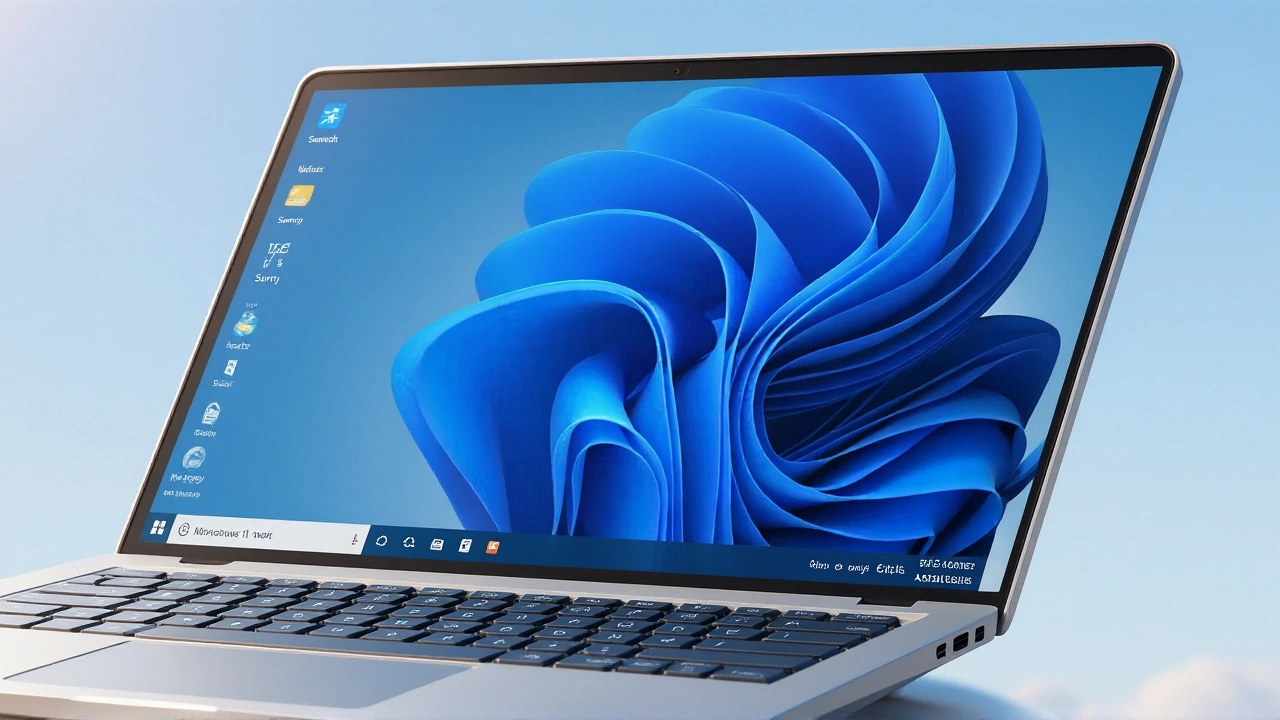Windows is no longer just a platform for running apps—it’s becoming a co-pilot for your digital life. At Ignite 2025Redmond, Microsoft pulled back the curtain on a radical transformation: an agentic operating system that doesn’t wait for commands—it anticipates them. Starting this week, Windows Insiders in the Dev channel are already seeing a new toggle labeled "experimental agentic features," quietly signaling the start of something bigger than another UI tweak. This isn’t just Copilot with a new coat of paint. It’s a fundamental shift in how your PC thinks, works, and collaborates—with AI agents running alongside you, not beneath you.
What Exactly Is an Agentic OS?
Think of it like having a digital assistant who doesn’t just answer questions but acts on them—without asking. Microsoft’s vision, laid out in its November 18 blog post, is for Windows to become an environment where AI agents can autonomously perform tasks: organizing your Downloads folder, scheduling meetings from email threads, even drafting replies based on your tone. The magic lies in the Model Context Protocol (MCP), a new standard Microsoft is baking directly into Windows. Unlike earlier AI integrations that relied on cloud-heavy APIs, MCP lets agents understand context across apps, files, and calendars—locally, securely, and efficiently.
At the heart of this is Agent Workspace, a parallel session that runs alongside your own. It’s not a virtual machine. It’s not a background process. It’s a sandboxed, auditable, policy-controlled environment where agents operate with their own agent accounts—separate digital identities tied to your device but isolated from your personal files. As Microsoft’s support docs explain, this setup is "more efficient than Windows Sandbox" while offering the same isolation. You’re still in control. You can see what agents are doing. You can pause them. You can delete their activity logs.
Enterprise Control: IT Admins Get the Keys
For businesses, this is the biggest win. Microsoft didn’t just build the future—it built the safety rails. Starting in public preview, IT departments will manage all agent features through tools they already know: Intune, Entra, and Group Policy. Admins can enable or disable agent connectors in File Explorer and Settings, enforce minimum security policies, and deploy agent tools via MSIX packages. That’s huge. No more waiting for vendor-specific tools or risky workarounds. This is enterprise-grade AI, wrapped in familiar management layers.
And Microsoft is being careful. The company confirmed in its November 17 support update that "stricter rules for agent accounts" are coming in future releases. That means you won’t just be able to let any agent run wild. Permissions will be granular. Audit trails will be mandatory. And the rollout? Phased. Slow. Tested first by Windows Insiders before hitting corporate networks.
Beyond the Desktop: AI Power on the Edge
It’s not just about agents. Microsoft also unveiled Microsoft Foundry on Windows, bringing powerful on-device AI APIs like Video Super Resolution (VSR) and Stable Diffusion XL (SDXL) to Copilot+ PCs. That means your laptop can upscale grainy video in real time, generate custom images without sending data to the cloud, and even enhance webcam quality during Zoom calls—all locally, using your device’s NPU.
And if you need more muscle? Windows 365 for Agents lets AI systems tap into full Cloud PCs. Imagine an agent that needs to run a 10-hour rendering job or access legacy software only available on Windows Server. Instead of tying up your physical machine, it spins up a cloud instance, does the work, and shuts down—no human intervention needed.

Why This Matters
This isn’t just about productivity. It’s about redefining the relationship between humans and machines. For years, AI assistants asked us to speak in commands. Now, they’re learning to work like colleagues. The twist? Microsoft isn’t trying to replace you. It’s trying to reduce the noise. The repetitive tasks. The mental overhead.
"The future will work with AI-powered apps which help you automate everyday tasks," said a Microsoft rep quoted by tech creator Brentech in a November 19 YouTube video. That’s the quiet promise here: less clicking, less switching, less thinking about the tools—and more doing.
But it’s not without risks. Critics worry about "automation bias"—users trusting agents too much. Others fear hidden data flows. Microsoft insists transparency is core: every agent action must be logged, visible, and revocable. Still, the first wave of users will be Insiders. Enterprises will wait. And that’s exactly how Microsoft wants it.
What’s Next?
Advanced controls for agent management are planned for 2026. That’s when we’ll likely see role-based permissions—"this agent can access your calendar but not your financial files"—and integration with third-party agent marketplaces. Microsoft hinted at an "agent ecosystem" akin to app stores, where developers can build and distribute specialized agents for legal, HR, or engineering workflows.
For now, if you’re a Windows Insider on the Dev channel, you can flip the switch and see what happens. For everyone else? The wait is on. But make no mistake: Windows 11 is becoming something new. Not just an OS. An intelligent partner.
Frequently Asked Questions
How does this affect everyday users who aren’t tech-savvy?
For average users, the changes will feel subtle at first—like files automatically organized or meeting invites pulled from emails without you typing anything. Microsoft designed the system to be opt-in and transparent: you’ll see agent activity in a dedicated panel, and can disable it anytime. No hidden automation. No surprise actions. The goal is to reduce friction, not confusion.
Will this slow down my PC?
Only if you’re on older hardware. Agent Workspace runs efficiently by leveraging the NPU in Copilot+ PCs and uses less memory than Windows Sandbox. Microsoft recommends at least 16GB RAM and an AI-capable processor for full functionality. On older machines, the "experimental agentic features" toggle won’t appear—so no performance hit. The system self-regulates based on hardware.
Can AI agents access my personal files without permission?
No. Every agent operates under strict permission boundaries set by the user or IT admin. Agent accounts can’t access files outside their assigned scope—even if they’re running in parallel. Microsoft’s documentation emphasizes "user control" as a core principle, and all agent interactions are logged in the Windows Security Center for auditability.
How is this different from Siri or Google Assistant?
Unlike voice assistants that respond to queries, Windows agents act autonomously within your OS. They can open apps, edit documents, move files, and send emails—not just answer questions. They’re deeply integrated into File Explorer, Settings, and Outlook, not confined to a chat window. Think of it as a digital intern who knows your workflow, not just a chatbot with a voice.
When will this be available to the general public?
Microsoft plans a phased rollout. Enterprise features will enter public preview in early 2026, with broader consumer availability likely by late 2026 or early 2027. The "experimental agentic features" toggle is already in Dev channel builds as of November 19, 2025, but it won’t appear on standard Windows 11 installations until after extensive testing and policy refinement.
Is my data safe with AI agents running locally?
Yes—by design. Microsoft’s architecture keeps sensitive data on-device unless explicitly shared. Agent Workspace isolates processing from your main session, and all agent interactions are encrypted and auditable. Unlike cloud-based assistants, these agents don’t need to send your emails or files to Microsoft servers to function. Local processing is the default, not the exception.



